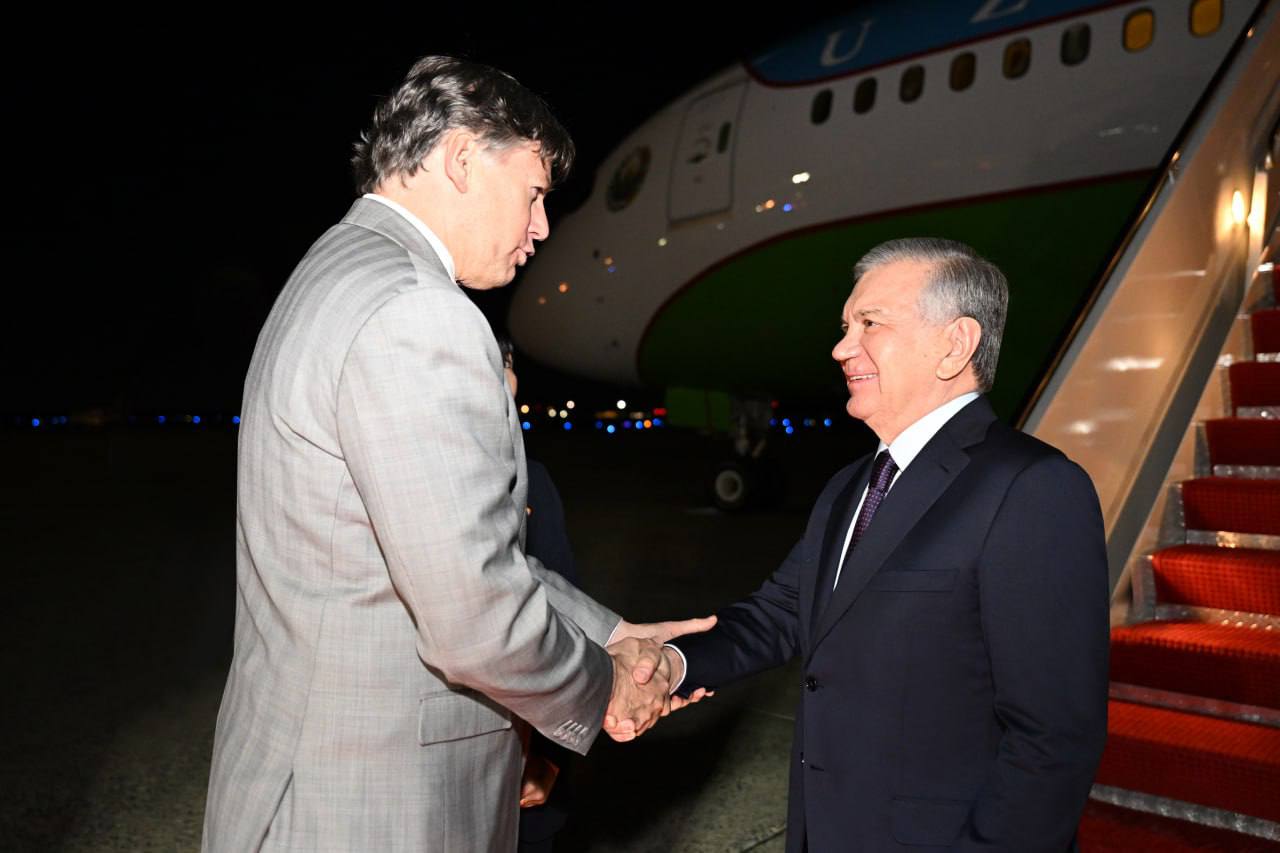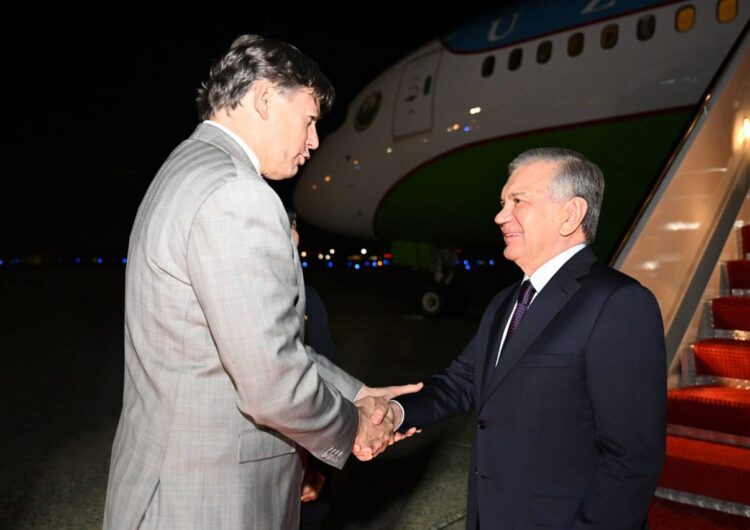By Komil Allamjonov
Less than two months after his last visit, Uzbekistan President Shavkat Mirziyoyev is traveling to the United States. In September, he attended the UN General Assembly and met with President Trump on the sidelines. He and other Central Asia leaders are scheduled to attend tomorrow’s C5+1 summit (Central Asia + the United States) in Washington.

Uzbekistan President Shavkat Mirziyoyev is greeted by Deputy Secretary of State Christopher Landau upon arriving in the U.S. for Thursday’s C5+1 summit.
Credit: Office of the President of Uzbekistan
It has become increasingly clear that relations between the Central Asian republic and the U.S. are taking on a new shape – much of which will be determined based on the outcome this week’s summit. Yet one thing is already evident: the tense atmosphere of the mid-2000s between Washington and Tashkent is long behind.
In September, Uzbekistan came to New York well prepared. The country signed agreements with several major American companies, including Citigroup, BlackRock, Cleveland Clinic, Oppenheimer and others. The total value of contracts and prospective projects exceeded $100 billion. In addition, Uzbekistan announced the purchase of 22 Boeing 787 Dreamliners worth $8 billion — an impressive result by any measure.
The September agreements were followed by a visit to Uzbekistan by Special Envoy for South and Central Asia Sergio Gor (now U.S. Ambassador to India) and Deputy Secretary of State Christopher Landau, who were received by President Mirziyoyev. The parties reviewed the implementation of the New York agreements, discussed new areas of cooperation and prepared for the upcoming summit.
Gor and Landau also met with Saida Mirziyoyeva, Head of the Presidential Administration of Uzbekistan. The American delegation proposed lifting visa requirements for U.S. citizens, given the growing interest among American tourists in visiting Uzbekistan. Ahead of tomorrow’s summit, Uzbekistan complied, lifting visa requirements for all U.S. citizens for stays of up to 30 days. This step makes it easier for American tourists and investors to visit the country and explore its opportunities. It’s a move that would have seemed unthinkable not long ago.
All of this demonstrates that Uzbekistan is capable of becoming a bridge for the United States in Central Asia. The country has economic potential, political will and a new generation of professionals. Both President Trump, who seeks to expand business ties across the globe, and President Mirziyoyev, who continues to implement domestic reforms, share a common goal: to improve the lives of their citizens and create new opportunities at home.
The outlines of this new partnership are already visible. For the United States, Uzbekistan represents a new frontier in the field of critical minerals. The country possesses significant reserves of tungsten, molybdenum, magnesium, lithium, graphite, vanadium, titanium and rare earth elements. The country has said its total potential value exceeds $3 trillion. This creates an opportunity for the United States to diversify its sources of critical raw materials.
Uzbekistan, in turn, is interested in attracting American investment, technology, scientific expertise and management experience. Declarations of intent have already translated into concrete steps: in September, President Mirziyoyev met with leading geological exploration companies, and in late October approved the establishment of a Center of Competence in Geology in partnership with the Colorado School of Mines. The potential for cooperation extends well beyond the mineral and industrial sectors; it also includes culture, education, and tourism.
Nevertheless, both sides still face a number of challenges in creating the most favorable environment for investors. Uzbekistan must continue its efforts to strengthen investor protections, while the United States could facilitate progress by lifting the outdated Jackson–Vanik amendment, paving the way for an expanded portfolio of mutually beneficial projects. Additionally, simplifying the U.S. visa process for Uzbek citizens would further strengthen business and professional exchanges. Both countries would also benefit from establishing a bilateral investment treaty to protect investors’ interests.
Relations between Uzbekistan and the United States are no longer what they were in 20 years ago. Today, the leaders of both nations clearly understand that sustainable progress is impossible without prioritizing the well-being of their peoples. Tomorrow’s C5+1summit will at the very least affirm a new chapter in the bilateral relationship, and at best, serve as a starting point for a shared future.
Komil Allamjonov is a media and education entrepreneur from Uzbekistan and a former presidential press secretary.
READ MORE
Save the Date: 2nd Princeton CorpGov Forum May 21, 2026
Register for our weekly newsletter HERE
Contact:
Click HERE to follow us on LinkedIn







